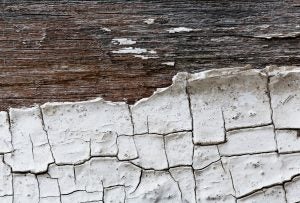
Federal court of appeals gives EPA one year to update lead-based paint standards
Tom Neltner, J.D., is Chemicals Policy Director
Update: On July 2, 2018, EPA issued the proposed rule after the court gave it a 90-day extension. The agency has one year – until July 1, 2019 – to issue a final rule. Blog clarified on timing.
This week, the federal Ninth Circuit Court of Appeals directed the Environmental Protection Agency (EPA) to update its regulations defining lead-based paint and how much lead in dust represents a hazard. The court gave EPA 90 days to issue a proposed rule and one year later to publish a final rule with an option to convince the court that it needs additional time. The court said the agency had unreasonably delayed action on a citizen’s petition submitted in 2009. The science showing the need for action has only become more compelling in the eight years since EPA acknowledged the shortcoming of its rules. Rather than drag out this litigation, the agency should move quickly to revise its lead-based paint hazard standards to better protect children’s health.
EPA set the dust-lead hazard standard in 2001 after determining that a child living in a home with those levels had only a 1 to 5% chance of having an elevated blood lead level (EBLL) as defined by the Centers for Disease Control and Prevention (CDC). The scientific evidence now shows that the risk is greater than previously estimated. In addition, CDC has tightened its definition of an EBLL. As a result, according to the American Academy of Pediatrics, the risk to a child of having an EBLL in a home that meets EPA’s current dust-lead hazard standard is more than 50%.
The Ninth Circuit found that EPA has a duty under the Toxic Substances Control Act to update its lead-based paint hazard standard to ensure it is sufficient to protect children’s health. The court said:
“This statutory framework clearly indicates that Congress did not want EPA to set initial standards and then walk away, but to engage in an ongoing process, accounting for new information, and to modify initial standards when necessary to further Congress’s intent: to prevent childhood lead poisoning and eliminate lead-based paint hazards.”
The court made a similar finding for the agency’s definition of lead-based paint when it stated that “[t]he lead-based paint standard set out originally by Congress also appears to be too high to provide a sufficient level of safety.” The Congressional definition, set in 1992, was based on a definition from the 1970s and was not related to the risk lead exposure poses to children. Congress authorized EPA and the Department of Housing and Urban Development (HUD) to update the definition to accomplish the goals of preventing childhood lead poisoning and eliminating lead-based paint hazards.
The 2009 citizen’s petition was submitted to EPA by the National Center for Healthy Housing, Sierra Club, United Parents Against Lead (UPAL), and nine state and local organizations. EPA responded by saying it would begin an appropriate proceeding. With no proposed rule in sight seven years later, in August 2016, Sierra Club, UPAL, and six other state and local organizations, with Earthjustice serving as counsel, asked the Ninth Circuit to issue a writ of mandamus compelling EPA to act on the 2009 petition. In June 2017, the court heard oral arguments from EPA and Earthjustice. In an unusual move, EPA told the judges that it would not mediate a settlement and opted to force the court to issue the writ of mandamus. And yesterday, the court did just that.
Now, EPA Administrator Scott Pruitt must decide whether he is serious about his commitment to protecting children from lead. In December 7, 2017 testimony before the House Energy and Commerce Subcommittee on Environment, Pruitt declared that “there’s a multifaceted approach we need to evaluate if we are to declare a ‘war on lead,’ if you will.” Rather than delaying action by seeking review of the case by the Supreme Court or a larger panel of Ninth Circuit judges (neither of which would be warranted here), he should focus on updating the lead dust and paint standards based on the latest science. He should also consider updating the hazard standard for lead in soil, which is similarly outdated.
The federal court decision comes on the heels of the historic decision in November 2017 by California’s Appellate Court for the Sixth District holding that three companies – Sherwin-Williams Company, NL Industries, and ConAgra Grocery Products – created a public nuisance by promoting the use of lead-based paint in the interior of residences built before 1951, even though they had actual knowledge of the harm the paint would pose to children. The trial court is now determining the amount that defendants must pay into a fund to remediate the lead hazards and appointing a suitable receiver to manage the fund.
These two cases serve as an excellent reminder that not only does the Earth need a good lawyer (as our friends at Earthjustice say); so do kids. While lead-based paint is not the only source of lead exposure to children, it is the most significant for those children living in homes with lead-based paint, especially when the paint is deteriorated. Thousands of children still live in homes with lead-based paint hazards – with poor and minority children at greatest risk. This court decision is an important step in protecting these children.
The Ninth Circuit Court of Appeals found that “The new information is clear in this record: the current standards for dust-lead hazard and lead-based paint hazard are insufficient to accomplish Congress’s goal.” With homeowners, renters, landlords, contractors, and health departments taking thousands of paint and dust samples every year, they need to be comparing the results to standards based on the latest science instead of outdated one that underestimates the risk. EPA has a duty to update those standards to better protect children across the country from the dangers of lead.












